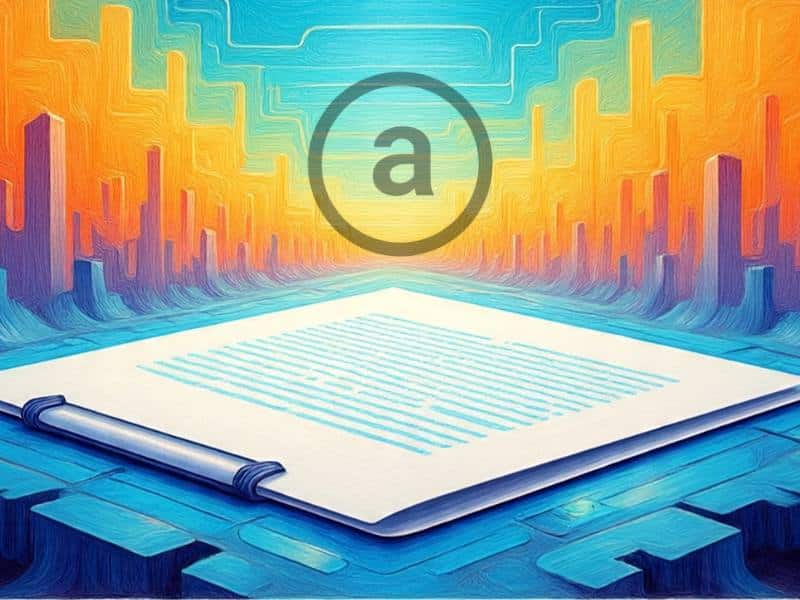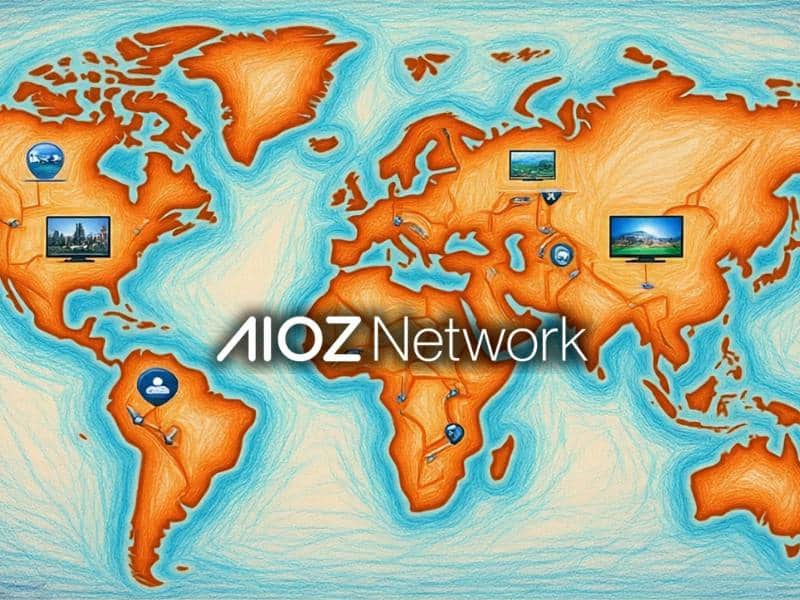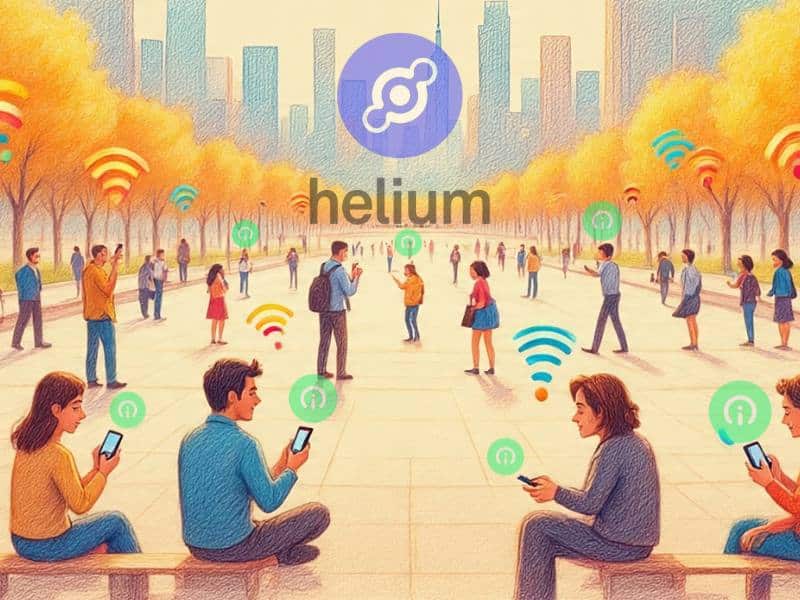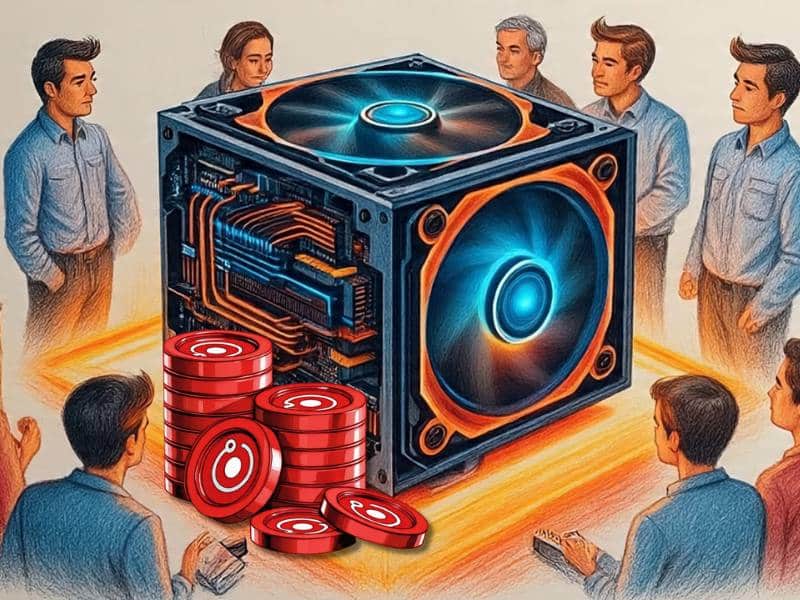Introduction: The Future of Decentralized Infrastructure
Picture this: your unused Wi-Fi earning you money, videos stored online that never disappear, and AI programs running straight from your laptop without any extra effort. It might sound like something from a sci-fi movie, but it’s already happening.
These innovations are part of DePIN — short for Decentralized Physical Infrastructure Networks — a movement that’s transforming how the internet works by changing the way we store, share, and power our digital world.
In this guide, we’ll break down 8 groundbreaking AI and DePIN crypto projects that could see explosive growth by 2026, and show you why they’re worth keeping on your radar.

1. Arweave – The Internet’s Permanent Archive
Imagine a place where your files, photos, videos, or even entire websites can live online forever, untouched, unedited, and impossible to delete. That’s exactly what Arweave offers. It’s like giving the internet its own permanent memory, one that can’t be altered or erased by corporations, governments, or time itself.
When you upload something to Arweave, it’s stored across a decentralized network that ensures your data is always available, no matter what. This makes it perfect for preserving important documents, NFTs, research, historical records, basically anything you don’t want disappearing.
The network runs on the AR token, which covers storage costs, rewards the people maintaining the system, and can even be wrapped for use on other blockchains.
And here’s why this matters: in a world where so much online content is temporary — from social media posts that vanish, to websites that go offline — Arweave is solving a problem most people don’t realize exists until it’s too late. As more individuals, companies, and institutions look for truly permanent digital storage, AR could become one of the most valuable pieces of the decentralized web.
2. Walrus – Big Storage for Big Data
Picture the internet as a vast city; some buildings are small shops, others are massive skyscrapers. Walrus is the ultra-secure, high-capacity skyscraper built for the heaviest digital loads. It’s made for the kind of files that don’t just take up space, they dominate it; like high-resolution streaming videos, enormous AI training datasets, and complex 3D models used in gaming, architecture, and design.
Its engine is the WAL token, which keeps everything moving. It covers storage fees, rewards those who stake their tokens to strengthen the network, and gives the community voting power over how Walrus grows and adapts.
Why should you care? Because as decentralized applications (dApps) keep getting smarter and more ambitious, the demand for massive, reliable storage is skyrocketing. Walrus isn’t just keeping up with that demand; it’s built for it. And in a Web3 world that’s moving away from centralized storage giants, Walrus could become the first choice for anyone who needs to store big data without compromise.

3. AIOZ Network – Decentralized Streaming & Computing
Imagine if the power behind Netflix, YouTube, and cloud computing didn’t come from massive corporate data centers, but from thousands of people all over the world. That’s the vision of AIOZ Network.
Instead of relying on a few centralized servers, AIOZ runs on a vast web of edge nodes — everyday computers that work together to deliver smooth video streaming, store data securely, and handle heavy-duty computing tasks like AI model training and 3D rendering. This setup makes the network faster, more resilient, and far less dependent on any single point of failure.
Fueling it all is the AIOZ token. It’s used to reward people who share their unused internet bandwidth or GPU power, process transactions across the network, and allow staking to keep everything secure. Anyone can participate — from gamers with powerful PCs to everyday users with a decent internet connection — and earn rewards while strengthening the network.
In a world where streaming and cloud services are dominated by a handful of tech giants, AIOZ is building something radically different: an internet powered by its own community, where the benefits go straight back to the people who make it possible.
4. Theta Network – Streaming Without the Middleman
When you watch a live stream or video today, it’s usually powered by massive, centralized servers owned by a few major corporations. These systems are expensive to run, limit who can participate, and often pass the costs down to viewers and creators. Theta Network offers a different vision, one where streaming is powered by the community itself.
Instead of relying on corporate infrastructure, Theta lets everyday people share their extra internet bandwidth to help deliver video across the globe. In return, they earn rewards, turning unused internet capacity into real value.
The platform runs on two tokens: THETA, which is used for staking and governance, and TFUEL, which handles streaming payments, transactions, and contributor rewards. This dual-token setup keeps the network secure, fast, and fair.
Beyond streaming, Theta is building an entire Web3 video ecosystem, complete with its own NFT marketplace and creator tools. This gives content creators new ways to monetize their work directly, without paying huge cuts to middlemen. Viewers enjoy faster, cheaper video delivery, while contributors get paid for helping power the network. In a world where demand for high-quality video is exploding, Theta could be the blueprint for how we stream in the future.
5. Grass – Bandwidth Monetization on Solana
Think about your internet connection for a second. You pay for it every month, but most of the time, a big part of that bandwidth is just sitting there, unused. Grass takes that wasted resource and turns it into something valuable: a stream of rewards you can earn without changing your daily routine.
All it takes to get started is a small browser extension (with a mobile app on the way). Once installed, Grass quietly runs in the background, drawing only from the bandwidth you aren’t using. You can binge your favorite shows, join work calls, or game online without even noticing it’s there. In return, you’re rewarded in GRASS tokens for helping power the network.
This isn’t just about earning a little extra on the side. Grass has a bigger vision: building a global, decentralized bandwidth marketplace. Imagine a world where anyone, anywhere, can tap into extra internet capacity without going through a handful of big telecoms. Whether you’re on home Wi-Fi, mobile data, or public internet, you can be part of an open system that’s faster, fairer, and run by its community.
No special hardware. No complicated setup. Just a simple way to turn something you already pay for into an asset, while helping shape the future of how the world connects.

6. Helium – Wireless Networks for IoT
Helium is a global wireless network built by everyday people, not telecom giants. It’s designed for the Internet of Things (IoT) — devices like package trackers, air-quality sensors, and farm monitors — and uses small, low-power hotspots to provide long-range, low-energy coverage without expensive mobile plans.
The network runs on the HNT token, used for staking, governance, and paying for data usage. Hotspot operators earn HNT for expanding coverage, making it easy for anyone to participate. Now, with mobile service rolling out, Helium is set to connect not just IoT devices but also smartphones and laptops, all on a community-owned network where the benefits go back to the people who power it.
7. Filecoin – The Web3 Storage Giant
Think of Filecoin as the world’s biggest, decentralized hard drive, but instead of one company owning it, thousands of people all over the globe pitch in space from their own systems. Your files get encrypted, broken into pieces, and spread across multiple locations, so even if one provider disappears, your data stays safe and accessible.
The network runs on the FIL token, which acts like the currency for everything: paying for storage, retrieving files, and rewarding the folks keeping it all running. And here’s the thing, as the world drowns in data, from family photos to scientific archives, the need for secure, censorship-proof storage is only going to grow. That’s where Filecoin could quietly become one of the most important pillars of the decentralized web.

8. Render Network – GPU Power for AI & 3D Rendering
Render is like an Airbnb for computer power. Instead of renting a room, you’re tapping into unused graphics card (GPU) power from people all over the world. This makes it possible for artists, game developers, and AI teams to run heavy 3D rendering or complex AI tasks without buying expensive hardware.
The system runs on RNDR tokens, which are used to pay for jobs and reward those sharing their GPU power. With AI and digital content creation exploding, the demand for affordable, high-performance computing is through the roof, and Render is stepping in to meet it.
Conclusion: Who Will Lead by 2026?
From locking data into permanent storage and streaming without middlemen to renting out unused GPU power and turning spare bandwidth into income, these eight projects are rewriting the rules of the internet. They’re not just offering new services; they’re shifting control from a handful of corporations to a global network of everyday users.
By 2026, we’ll likely see clear winners emerge. Some will quietly power the apps and platforms we use daily, while others could become household names in the blockchain space. But the real victory will be in how these technologies reshape our digital lives, making the web more open, more efficient, and truly community-driven.
So, when the dust settles, the question won’t just be “Who won?” It will be, “How much of the internet is now truly ours?”
